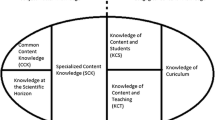Abstract
Introductory electromagnetism is a central part of undergraduate physics. Although there has been some research into student conceptions of electromagnetism, studies have been sparse and separated. This study sought to explore second year physics students’ conceptions of electromagnetism, to investigate to what extent the results from the present study are similar to these results from other studies, and to uncover any new forms of alternative conceptions. Data for this study came from 15 in-depth interviews. Three previously unreported alternative conceptions were identified in the study: 1) induced current varies proportionately with current in solenoid; 2) there must be contact between magnetic flux and the external coil in order for any emf to be induced in the coil; 3) coulombic or electrostatic potential difference is present in an induced electric field. These alternative conceptions were manifested in these students’ explanations of electromagnetic phenomena presented to them during the interviews.





Similar content being viewed by others
References
Bagno, E., & Eylon, B. (1997). From problem solving to a knowledge structure: An example from the domain of electromagnetism. American Journal of Physics, 65(8), 726–736.
Ferguson-Hessler, M. G. M., & de Jong T. (1987). On the quality of knowledge in the field of electricity and magnetism. American Journal of Physics, 55(6), 492–497.
Furió, C., & Guisasola, J. (1998). Difficulties in learning the concept of electric field. Science Education, 82, 511–526.
Galili, I. (1995). Mechanics background influences students’ conceptions in electromagnetism. International Journal of Science Education, 17(3), 371–387.
Galili, I., & Kaplan, D. (1997). Changing approach to teaching electromagnetism in a conceptually oriented introductory physics course. American Journal of Physics, 65(7), 657–667.
Greca, I. M., & Moreira, M. A. (1997). The kinds of mental representations – models, propositions and images – used by college physics students regarding the concept of field. International Journal of Science Education, 19(6), 711–724.
Guisasola, J., Almudí, J. M., & Zubimendi, J. L. (2004). Difficulties in learning the introductory magnetic field theory in the first years of university. Science Education, 88, 443–464.
Gunstone, R., McKittrick, B., & Mulhall, P. (2005). Textbooks and their authors: Another perspective on the difficulties of teaching and learning electricity. In K. Boersma, M. Goedhart, O. de Jong, & H. Eijkelhof (Eds.), Research and the quality of science education (pp. 341–366). Dordrecht, The Netherlands: Springer.
Halliday, D., Resnick, R., & Walker, J. (2001). Fundamentals of physics. New York: Wiley.
Jones, C. (2003). Understanding and using the minus sign in Faraday’s Law. Physics Education, 38(6), 526–530.
Lanzara, E., & Zangara, R. (1995). Potential difference measurements in the presence of a varying magnetic field. Physics Education, 30, 85–89.
McMillan, C., & Swadener, M. (1991). Novice use of qualitative versus quantitative problem solving in electrostatics. Journal of Research in Science Teaching, 28(8), 661–670.
Peters, P. C. (1984). The role of induced emf’s in simple circuits. American Journal of Physics, 52(3), 208–211.
Pocovi, M. C., & Finley, F. (2002). Lines of force: Faraday’s and students’ views. Science and Education, 11, 459–474.
Rainson, S., Tranströmer, G., & Viennot, L. (1994). Students’ understanding of superposition of electric fields. American Journal of Physics, 62(11), 1026–1032.
Törnkvist, S., Pettersson, K. A., & Tranströmer, G. (1993). Confusion by representation: On students Comprehension of the electric field concept. American Journal of Physics, 61(4), 335–338.
Author information
Authors and Affiliations
Corresponding author
Rights and permissions
About this article
Cite this article
Thong, W.M., Gunstone, R. Some Student Conceptions of Electromagnetic Induction. Res Sci Educ 38, 31–44 (2008). https://doi.org/10.1007/s11165-007-9038-9
Received:
Accepted:
Published:
Issue Date:
DOI: https://doi.org/10.1007/s11165-007-9038-9




